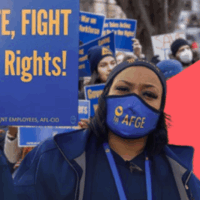A U.S. regulation requiring retirement advisers to put their clients’ best interests before their own profits when advising clients was slated to go into effect next Tuesday, but President Trump’s Labor Department on Tuesday announced a decision delaying the fiduciary rule by 60 days amid pressures from the financial industry.
The problem is that even the 60-day delay —let alone any further decision to scale back the rule or rescind it outright —will impact working people’s retirement accounts. Even the Trump Labor Department’s own initial analysis conceded that every day of delay means more conflicted advice, leading to up-front losses that multiply over time. The Labor Department originally estimated that the delay could cost investors $147 million in the first year, and $890 million over 10 years, in front-load mutual funds alone – though the final delay declined to adopt any estimate.
The Economic Policy Institute has constructed more comprehensive estimates and finds that the 60-day delay would cost retirement savers’ IRAs $181 million this year and $3.7 billion over the next 30 years —and this estimate is still an undercount because it does not include other subjects of potential conflicted advice, like 401(k)s.
America is facing a looming retirement crisis—and President Trump has the power to do something about it, right now. He can help Americans save billions more in their retirement accounts in coming decades. He doesn’t need new laws; he just needs to let an existing rule take effect. But even after the Department of Labor announced a plan to delay that rule Tuesday, he has a second chance ahead to step up and keep his campaign promise to assert independence from financial industry special interests.
Numerous surveys suggest that Americans are concerned that they won’t have enough money for retirement, and for good reason. With the shift from pensions to individual savings, gone are the days when many retirees could rely on a regular check when they retire—and as many as half of all workers lack access to employer-sponsored retirement accounts at all. The median retirement savings for people 56 to 61 is only $17,000, and fewer than half of working-age households are on track to save enough to maintain their pre-retirement standard of living.
Last year, the Department of Labor finalized the “conflict of interest” rule requiring retirement advisers to put their clients’ best interests before their own profits when advising clients. (We worked on the rule as Obama administration appointees at the Labor Department.) By requiring retirement advisers to either meet a “fiduciary” standard or put other safeguards into place, the rule holds financial advisers to the same benchmark already required of doctors and lawyers—that they act in their clients’ best interests. Survey data suggest that most retirement investors are shocked to learn that this isn’t already the law.
Before this rule, too many retirement advisors could legally steer clients to investments that generated higher commissions and fees—too often undisclosed or hidden in fine print—while providing lower returns for clients.
These conflicts have real consequences for savers. The Labor Department’s analysis of the rule suggested that retirement accounts with these kinds of conflicts could under-perform by $95 billion to $189 billion over the next 10 years, and by $202 billion to $404 billion over the next 20. Even these estimates vastly understate the scope of losses because they only account for a portion of the multi-trillion-dollar market for retirement investments.
That’s why it’s so important for this common-sense rule to take effect. Many large financial services firms were on track to comply by the rule’s April 10 effective date, but facing pressure from certain segments of the financial industry, President Trump issued a presidential memorandum directing the Labor Department to consider revising or even rescinding the rule entirely. Yesterday the Labor Department announced accordingly that it is delaying the entire rule’s effective date to June.
Meanwhile, the delay has introduced additional uncertainty into the market, punishing those financial services companies that have made upfront investments to comply with the rule. Why has the Trump Administration put firms that want to preserve conflicted advice ahead of those that are putting retirement savers first?
To be sure, a rule can always be improved. For one thing, the rule has a “Best Interest Contract Exemption” that allows financial advisers to continue many of their current practices if they give investors the right disclosures and enforceable protections. It’s a win-win on paper that could be further refined after seeing how it works in practice – but yesterday’s announcement further delayed those disclosures and protections from taking effect until January 2018.
Last year, Donald Trump regularly assailed Hillary Clinton for her financial industry ties, projecting himself as the candidate who would stand up for regular people. His decision to delay this rule is an ominous sign. As the rule’s new effective date approaches, will he protect the retirement savings of working people—carpenters and coal miners, teachers and technicians, firefighters and farmers—or allow a portion of the financial sector to continue to keep their clients in the dark about whose interests come first? For the sake of America’s workers and our nation’s economy, we hope he will come down on the side of working people next time.
Raj Nayak, director of research with the National Employment Law Project, previously served as deputy chief of staff to former Labor Secretary Tom Perez. Heidi Shierholz, director of policy with the Economic Policy Institute, is a former chief economist for the U.S. Labor Department.
This op-ed was originally published on Fortune.com.




